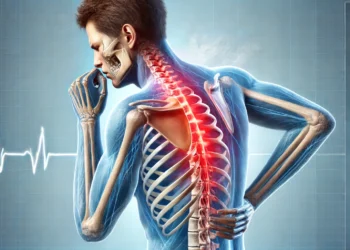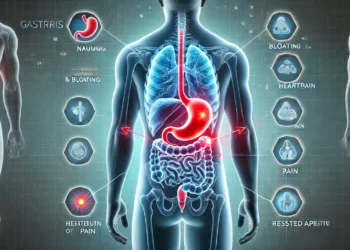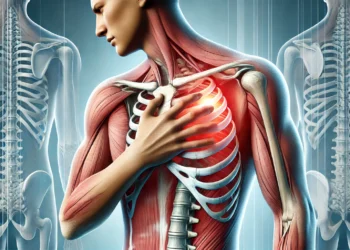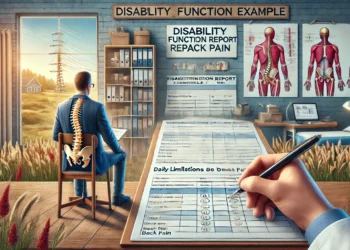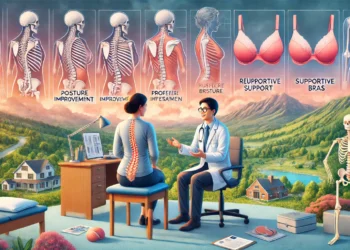Back pain is one of the most common health issues people face, and it can range from mild discomfort to severe, disabling pain. When you visit a healthcare provider for back pain, the approach to diagnosis and treatment is based on Medical Decision Making (MDM). In this article, we will explore what MDM is, how it relates to back pain, and why it plays a crucial role in determining the best treatment options for individuals suffering from back pain.
What is Medical Decision Making (MDM)?
Medical Decision Making (MDM) refers to the process by which healthcare providers assess the complexity of a patient’s condition, evaluate treatment options, and make informed decisions regarding the best course of action. In the case of back pain, MDM involves considering various factors such as the patient’s medical history, the severity of pain, potential underlying conditions, and any risks associated with treatment options.
MDM helps guide physicians in making decisions that are personalized, evidence-based, and in the patient’s best interest.
How MDM Relates to Back Pain Treatment
When you visit a healthcare professional for back pain, they use MDM to evaluate the severity of your condition and the most appropriate way to manage or treat it. Several aspects are considered during MDM for back pain:
Assessment of Pain Severity and Duration
The first step in MDM for back pain is understanding the severity and duration of the pain. Acute back pain (lasting less than six weeks) is often treated differently than chronic back pain (lasting more than three months). If the pain is recent and severe, immediate interventions like rest, ice, or medication may be recommended. For chronic back pain, a more long-term approach involving physical therapy, lifestyle changes, or other treatments may be considered.
Evaluating Underlying Conditions
A key aspect of MDM for back pain is identifying any underlying conditions contributing to the pain. This could include herniated discs, spinal stenosis, degenerative disc disease, or muscle strains. Your doctor may order imaging tests such as X-rays, MRIs, or CT scans to identify structural issues that need to be addressed in the treatment plan.
Treatment Options and Risks
Once the cause of the back pain is identified, MDM helps the healthcare provider weigh the risks and benefits of various treatment options. These may include non-invasive methods like physical therapy, medication (pain relievers, anti-inflammatory drugs), or lifestyle changes (posture improvement, weight loss). If conservative treatments don’t work, MDM might lead to consideration of more invasive procedures like injections, surgery, or referral to a specialist.
Patient Preferences and Goals
MDM also involves understanding the patient’s preferences and goals. Some patients may prefer non-invasive treatments, while others may want a quicker resolution, even if it involves more aggressive treatments. Clear communication between the healthcare provider and the patient is essential to ensure that the treatment plan aligns with the patient’s lifestyle, preferences, and goals.
Why is MDM Important for Back Pain Treatment?

MDM ensures that back pain treatment is customized to the individual. Back pain can have a variety of causes, from muscular issues to spinal abnormalities, and the appropriate treatment plan varies greatly based on the specific diagnosis.
Here’s why MDM is crucial in treating back pain:
- Personalized Care: MDM takes into account the unique medical history and needs of each patient, ensuring that the treatment plan is tailored to their specific situation.
- Informed Decision-Making: MDM ensures that healthcare providers make decisions based on evidence, clinical guidelines, and patient preferences, leading to better outcomes.
- Comprehensive Approach: MDM considers all aspects of the patient’s health, including pain severity, underlying conditions, and lifestyle factors, leading to more holistic and effective treatment.
- Minimizing Risk: By evaluating all treatment options and their associated risks, MDM helps avoid unnecessary or potentially harmful interventions, reducing the chance of complications.
Common MDM-Based Treatments for Back Pain
MDM for back pain can lead to a variety of treatments, depending on the severity and cause of the pain. Common treatment options include:
- Physical Therapy: A common approach for both acute and chronic back pain. It focuses on strengthening muscles, improving posture, and restoring mobility.
- Medications: Pain relievers, anti-inflammatory drugs, or muscle relaxants are commonly prescribed to manage pain and inflammation.
- Injections: Corticosteroid injections may be used to reduce inflammation in specific areas of the spine.
- Surgery: In severe cases, surgery may be recommended if other treatments fail, such as for herniated discs or spinal stenosis.
- Lifestyle Modifications: This can include weight management, exercise routines, ergonomic adjustments, and posture training to prevent future back pain.
How Can You Benefit from MDM in Back Pain Treatment?
If you are dealing with back pain, understanding MDM can help you be more involved in your treatment process. It’s important to communicate openly with your healthcare provider about your symptoms, preferences, and goals. Being proactive in discussing your pain and asking about different treatment options can lead to a more tailored approach that will likely improve your outcome.
FAQs:
1 What is Medical Decision Making (MDM)?
MDM is the process healthcare providers use to evaluate the severity, causes, and treatment options for a patient’s condition, ensuring personalized care.
2 How does MDM relate to back pain treatment?
MDM helps doctors assess the severity of back pain, identify underlying causes, and choose the most appropriate treatment options, from medications to surgery.
3 Why is MDM important in back pain management?
MDM ensures that treatment plans are tailored to individual needs, considering pain severity, patient preferences, and potential risks of different therapies.
4 What treatments can result from MDM in back pain?
Common treatments based on MDM include physical therapy, medications, injections, surgery, and lifestyle changes.
5 How can patients benefit from MDM in back pain treatment?
Patients benefit from MDM by receiving customized, effective treatment plans that align with their specific condition, preferences, and goals.
Conclusion: The Role of MDM in Back Pain Treatment
Medical Decision Making (MDM) is an essential part of diagnosing and treating back pain. It allows healthcare providers to offer personalized, evidence-based care by considering the severity of the pain, underlying conditions, available treatment options, and patient preferences. Whether you’re dealing with acute or chronic back pain, MDM ensures that your treatment plan is as effective and safe as possible. Always work closely with your healthcare provider to explore the best options and make informed decisions regarding your back pain treatment.
Read More Relevant Article:
- Read Also: What Is the Difference Between Regular Aleve and Aleve Back & Muscle Pain – What distinguishes regular Aleve from Aleve Back & Muscle Pain!
- Read Also: Back Pain in Matawan NJ: Finding Relief and Treatment Options – Back Pain in Matawan NJ!
- Read Also: 6 DPO Lower Back Pain: What You Need to Know – Lower Back Pain at 6 DPO!



